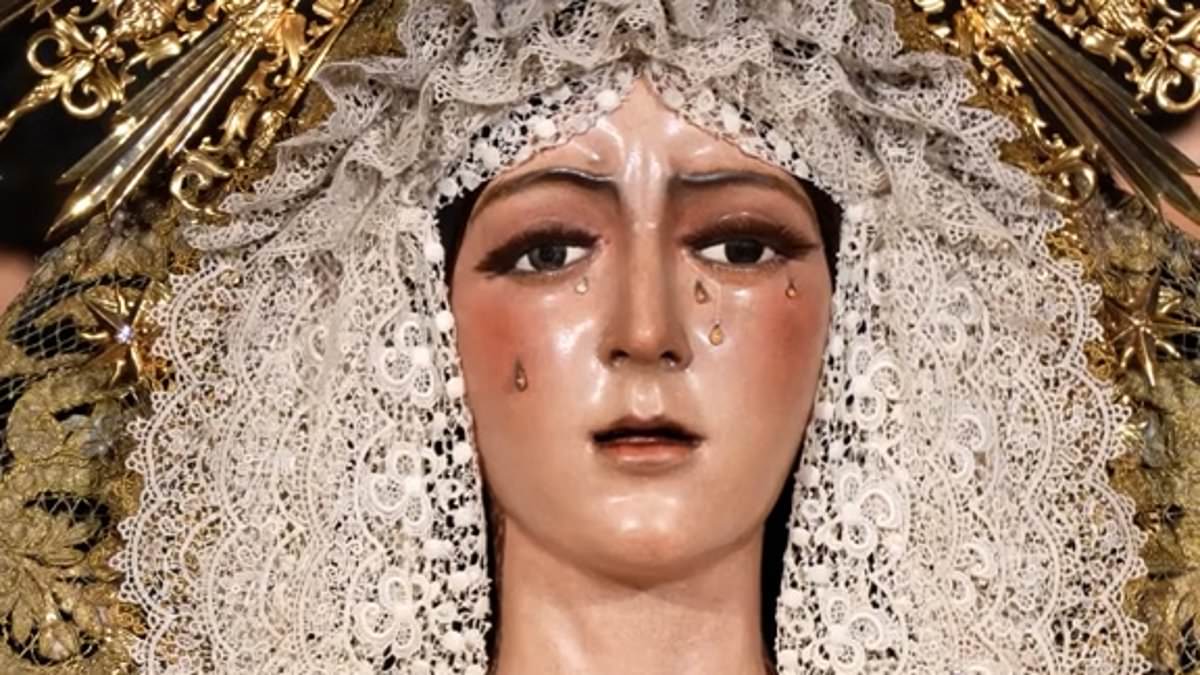
The restoration of a beloved 17th-century statue of the Virgin Mary, known as La Macarena, has caused widespread outrage among devotees and art enthusiasts alike. Located in Seville, Spain, this iconic 5ft 9in wooden effigy underwent a controversial makeover that left worshippers feeling disheartened and betrayed.
The Botched Makeover of La Macarena
Dating back to the 17th century, La Macarena has been revered by millions who visit her shrine and attend the Semana Santa (Holy Week) parades in Seville. Seeking to preserve its authenticity, the Brotherhood of the Macarena sent the statue out for regular touch-ups in June. However, when the statue returned, the changes were far more extensive than expected.
Devotees quickly noted longer eyelashes, a different complexion, and alterations to the facial expression of the statue. Gone was the familiar face they’d grown to worship. Many claimed the statue looked as though it had undergone “botched plastic surgery,” sparking protests outside the Basilica de la Macarena. Some critics commented that it appeared the Virgin Mary had been given “makeup”—an act many consider sacrilegious.
Outrage Within the Faithful
The restoration job, led by long-time restorer Francisco Arquillo Torres, 85, has been met with significant backlash. Torres, who had successfully worked on the effigy for years, reportedly made these tweaks without full community approval. Worshippers accused him of “murdering” the Virgin’s image, and protests soon erupted demanding accountability from the Brotherhood overseeing her care.
The controversy even led the basilica to close temporarily as last-minute adjustments were made. However, the changes did little to pacify anger, with many still lamenting her drastically altered facial features.
The Religious Community Demands Changes
The Brotherhood of the Macarena issued an apology and pledged to address the concerns. They named Pedro Manzano, a notable restorer in Seville, to take over the task of repairing the damage and restoring the statue to its authentic form. Speaking about his new role, Manzano admitted, “There’s nothing more dangerous than this job. If people don’t like what you do, they can come after you on the street.”
While Manzano works on correcting the restoration, La Macarena will remain away from her altar, leaving worshippers without their beloved symbol. Adjustments and repairs are expected to take several months, with the religious icon likely returning in time for the next Holy Week celebrations.
Past Failed Restorations
This is not the first time a restoration project has gone awry. The controversial makeover of La Macarena has been likened to infamous cases like the “Monkey Christ” in Borja, Spain, where an 82-year-old woman’s restoration of a Jesus painting led to disastrous results. Similarly, a botched renovation of a Polish shrine left a Virgin Mary statue resembling a character from “The Simpsons.” These cases highlight the delicate nature of restoring religious and historical treasures.
The Broader Impact
The botched restoration of La Macarena serves as a cautionary tale about the importance of preserving cultural heritage. The uproar in Seville highlights how deeply intertwined art, faith, and identity are for local communities. As the story continues to unfold, the world watches and hopes for the safe return of the Virgin Mary’s authentic image.
Preserving Iconic Religious Art
If you’re passionate about protecting delicate sculptures and art, consider creating the right environment in your own space. For example, specialized cleaning and conditioning tools like the Art Restoration & Preservation Kit by Winsor & Newton help you take care of valuable art while avoiding irreversible mistakes.